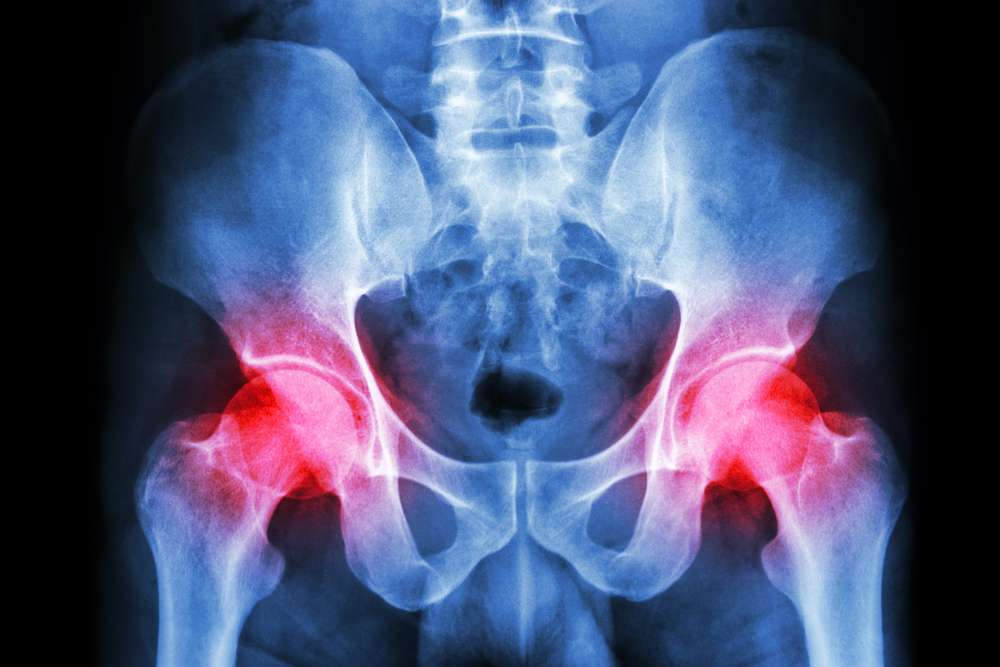“No athlete is truly tested until they’ve stared an injury in the face and came out on the other side stronger than ever” – Anonymous
Hip flexor strains are a common injury, particularly among athletes and individuals who engage in activities that require sudden movements or prolonged sitting. These strains can lead to pain, stiffness, and reduced mobility, affecting daily activities and performance.
In extreme cases, there can even be actual damage beyond just strained tissues. As the Cleveland Clinic notes,
“It’s rare to need surgery for a hip flexor strain. If you have a severe strain (grade 3), you might need surgery to repair your torn muscle. If the strain was severe enough to pull tendons or ligaments off of your bones, you’ll need surgery to re-attach them.”
Keep reading to learn the causes of hip flexor strains, how to prevent them, and the effective treatment options available to manage pain and promote recovery.

Understanding the Mechanics of a Hip Flexor Strain
The hip flexors are a group of muscles located in the front of the hip that are responsible for lifting the knee toward the body and bending at the waist. The primary muscles involved include the iliopsoas, rectus femoris, and sartorius. A strain occurs when one or more of these muscles are overstretched or torn, often due to excessive force or sudden movements.
According to MedLinePlus.gov,
“Sudden movements, such as sprinting, kicking, and changing direction while running or moving, can stretch and tear the hip flexors. Runners, people who do martial arts, and football, soccer, and hockey players are more likely to have this type of injury.”
Hip flexor tears are categorized by severity and fall into one of the following grades:
- Grade 1: Only a few muscle fibers are damaged from minor tears.
- Grade 2: There is a potential for a loss of function to the hip flexor due to a moderate amount of damaged muscle fibers.
- Grade 3: The muscle fibers are completely torn, and you can’t walk without a limp.
The commonly occurring hip flexor tears or strains are classified as grade two.
Common Causes of Hip Flexor Strain
As we have alluded to here already, there are several factors can contribute to a hip flexor strain, including:
- Overuse: Repeated activities, especially those involving running, kicking, or jumping, can strain the hip flexors.
- Sudden Movements: Quick changes in direction or speed can cause muscles to stretch beyond their capacity.
- Weakness or Imbalance: Insufficient strength or flexibility in the hip flexors and surrounding muscles can increase the risk of strain.
- Poor Posture: Prolonged sitting or improper alignment can lead to tightness in the hip flexors, making them more susceptible to injury.
Typical Symptoms of Hip Flexor Strain
Depending on the grade of the injury, the symptoms of a hip flexor strain can vary in severity and may include:
- Pain in the Front of the Hip: Discomfort that may radiate down the thigh.
- Stiffness: Limited range of motion, especially when trying to lift the knee or bend at the waist.
- Swelling and Bruising: In some cases, there may be visible swelling or discoloration.
- Muscle Spasms: Tightness and cramping in the hip area can occur.
4 Tips Preventing Hip Flexor Strains
As is true with all types of muscle and tendon injuries, prevention is the most effective “cure”. The key to preventing a hip flexor strain involves a combination of muscle strengthening, stretching, and proper warm-up techniques. Here are four effective strategies:
- Warm-Up Properly
Before engaging in physical activities, it’s essential to warm up your muscles. A good warm-up increases blood flow and prepares your body for movement. Consider dynamic stretches that target the hip flexors, such as leg swings and walking lunges.
- Strengthen Hip Flexor Muscles
Incorporating strength training exercises can help improve the resilience of your hip flexors. Exercises such as:
- Leg Raises: Lying on your back, lift one leg straight up while keeping the other flat on the ground.
- Hip Bridges: Lie on your back with knees bent and feet flat. Lift your hips toward the ceiling, engaging your glutes and core.
- Standing Hip Flexion: Stand and lift your knee towards your chest while maintaining balance.
- Enhance Flexibility
Regular stretching can help improve flexibility in the hip flexors, reducing the risk of strain. Incorporate the following stretches into your routine:
- Kneeling Hip Flexor Stretch: Kneel on one knee with the other foot in front, bent at 90 degrees. Push your hips forward to feel a stretch in the hip flexor of the kneeling leg.
- Seated Forward Bend: Sit with your legs extended in front of you and reach toward your toes, keeping your back straight.
- Maintain Proper Posture
Being mindful of your posture, especially during prolonged sitting, can help prevent tightness in the hip flexors. Use ergonomic chairs, take breaks to stand and stretch, and practice good alignment when sitting or standing.
Hip Flexor Strain Prevention for Sedentary Workers
Unfortunately, hip flexor strain can also occur in those who are not athletes nor engaged in repetitious or physically demanding tasks. In fact, the truth is that a sedentary lifestyle, including work that keeps one sitting in a chair all day, can be just as risky as a strenuously active job or lifestyle. The good news is that there are several tactics that can be incorporated into one’s daily routine to help prevent this condition.
Here are some ways to prevent hip flexor strains while working a sedentary job:
- Take breaks: If you sit at a desk for long periods, get up and move around every 30 minutes. You can set reminders on your phone or computer to help you remember to stretch or walk.
- Maintain good posture: Sit with your feet flat on the ground, your knees at a 90-degree angle, and your back straight.
- Avoid crossing your legs: Crossing your legs or leaning to one side can make hip tightness worse.
- Use an ergonomic chair: Use a chair that supports your spine’s natural curve.
- Stretch: Stretching before physical activity can help keep your muscles flexible, but you should also try stretching at the end of your day.
- Exercise regularly: A regular exercise routine can help build hip strength and mobility. You can try water aerobics, swimming laps, or using a recumbent bike.
- And remember to warm up before exercising: Gradually increase the intensity of your physical activity to avoid overstraining your muscles.
Treating Hip Flexor Strain
The reality is that most of us are were probably unaware of hip flexor strains until we found ourselves suffering the pain and discomfort of a strain. The good news is that, if you experience a hip flexor strain, there are appropriate treatment protocols you can follow to manage pain and promote healing. Here are some effective strategies:
- Rest and Recovery
Allow your body time to heal. Avoid activities that exacerbate the pain and take breaks as needed. Gradually reintroduce movement as your symptoms improve.
- Ice Therapy
Applying ice to the affected area can help reduce swelling and alleviate pain. Use an ice pack for 15-20 minutes every few hours during the initial 48 hours after the injury.
- Over-the-Counter Pain Relief
Nonsteroidal anti-inflammatory drugs (NSAIDs), such as ibuprofen or naproxen, can help reduce pain and inflammation. Always consult with a healthcare professional before starting any medication.
- Physical Therapy
If pain persists, consider consulting a physical therapist. They can develop a tailored rehabilitation program that includes stretching, strengthening exercises, and manual therapy techniques to promote recovery.
- Gradual Return to Activity
Once your symptoms improve, gradually return to your normal activities. Begin with low-impact exercises, gradually increasing intensity and duration as tolerated. Listen to your body and avoid pushing through pain.
Some Final Thoughts in Conclusion
Hip flexor strains can be painful and limiting, but with proper prevention and treatment strategies, you can effectively manage and recover from this injury. Remember, by warming up properly, strengthening and stretching the hip flexors, and using appropriate treatment methods, you can reduce your risk of strains and maintain an active lifestyle.
If you experience persistent pain or difficulty moving, consult a healthcare or soft tissue therapy professional for personalized guidance. Taking proactive steps will help you stay mobile and engaged in the activities you love.

Experience Pain Relief and Restored Movement with Pain and Performance Solutions
Even low-grade muscle injuries can significantly affect your body, often showing up as persistent pain. What begins as a minor discomfort can develop into a chronic condition if not addressed.
Active Release Techniques®, or ART®, is a soft tissue therapy that focuses on releasing muscle, tendon, ligament, and fascia restrictions. It is particularly effective in addressing strain-induced muscle pain. Our skilled ART® practitioners are committed to helping you overcome muscle pain related to strains and injuries. By integrating ART® into your stress management strategy, you can effectively tackle the physical effects of strains, alleviate pain, and enhance your overall quality of life.
At Pain and Performance Solutions, we’re dedicated to providing relief. During your initial consultation, we’ll take the time to understand your pain history and current symptoms. Through a comprehensive assessment, we’ll identify the root cause of your discomfort, whether stemming from a recent injury or the cumulative impact of repetitive motions or stress.
Using techniques like Active Release Techniques®, we can address the underlying issues and offer lasting relief. Your trust in our expertise is crucial for an effective treatment plan, and we’re here to help you regain comfort and mobility.
Ready to take the first step? Contact us at (707) 636-4404 or complete our online contact form today.
